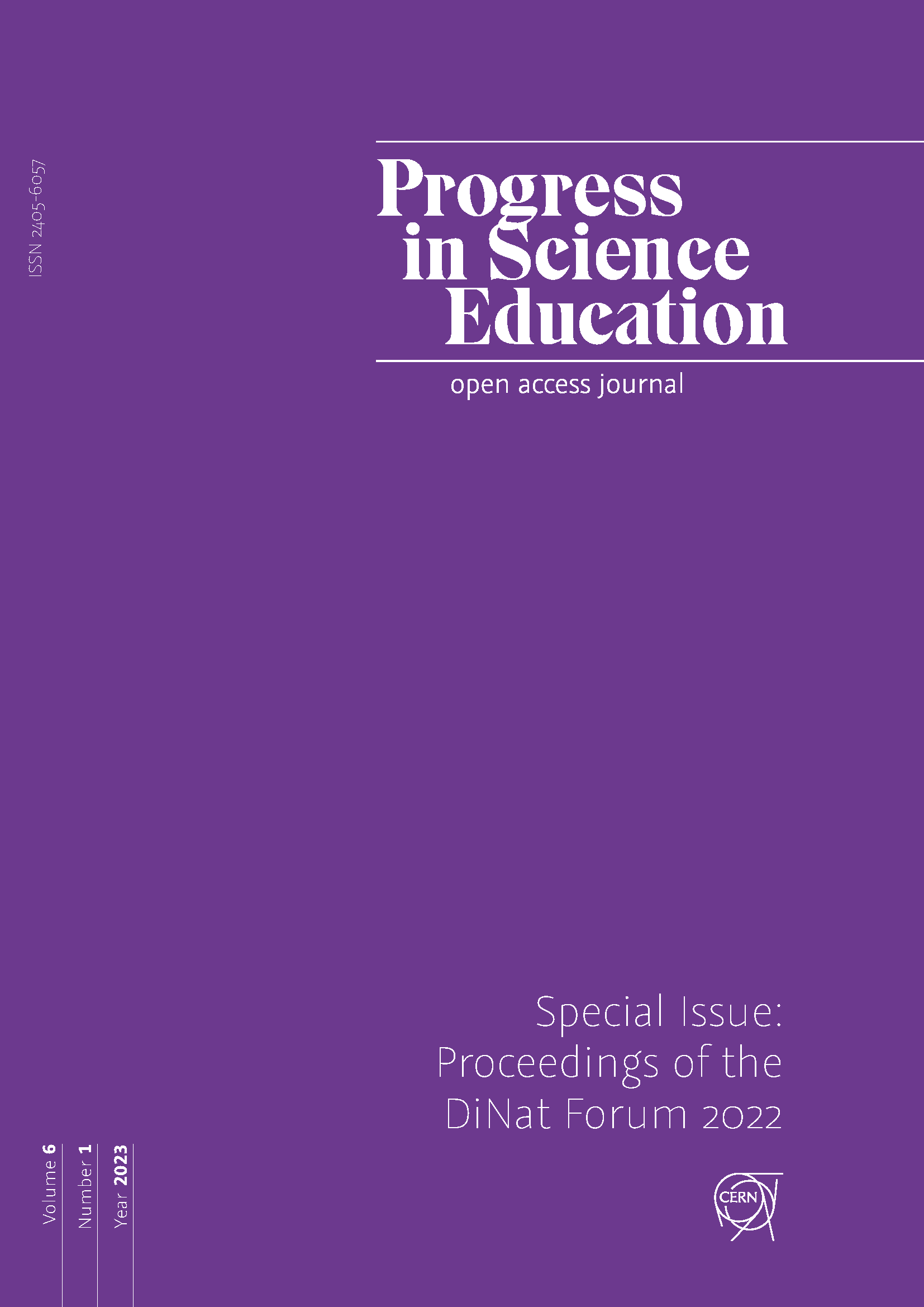Young children’s pre-instructional ideas of energy
steppingstones or stumbling stones for learning the scien-tific concept of energy?
DOI:
https://doi.org/10.25321/prise.2023.1374Abstract
Background: Energy is a core concept in science and has great socio-economic significance. Meanwhile, many coun-tries have included energy as a topic of instruction in their elementary school curricula. In Switzerland, energy learning is supposed to start in K-2 education, i.e., when children are four to eight years old (Deutschschweizer Erziehungsdirektoren-Konferenz, 2016). Students’ pre-instructional conceptions are considered a core element for suc-cessful learning. While there exists a large body of research on secondary students’ energy conceptions, little is known about young children’s ideas about energy (Detken & Brückmann, 2021).
Purpose: The present study aims at eliciting young children’s energy ideas and identifying therein resources for learn-ing the scientific concept of energy.
Sample/setting: The sample comprised 24 children (12 girls, 12 boys, ages six to eight years) of two first- and two second-grade classes in two schools in the city of Zurich, Switzerland. The children had not received instruction on energy or related topics.
Design and Methods: Single interviews with multiple child-friendly methods and tasks, such as drawing, sorting images, picture stories, were conducted. By references to everyday objects/phenomena and by using a specific protocol, the participants were invited to express themselves in-depth about all core aspects of energy (forms, transfer, transformation, dissipation/degradation, conservation). The interviews were videotaped for capturing speech and non-verbal modes of communication, transcribed, and analysed by qualitative content analysis with a multidimensional coding frame based on the structure of the scientific concept of energy.
Results: The results show that the interviewed children have rich and diverse ideas about energy. Children’s resources for energy learning are identified by linking selected categories to the different core aspects of the scientific energy concept. For example, the children describe several indicators of energy, such as electricity, motion, and light; these ideas may serve as “steppingstones” for introducing energy forms such as electrical, kinetic or radiation energy. Children’s frequent references to human activities or their physical state do not correspond to a scientific indicator of energy; such ideas, therefore, deserve attention when designing age-adequate instruction (a possible “stumbling stone” for introducing more scientific ideas). Many of the categories of the coding frame are found in many of the analysed interviews, though children have individual preferences. The first step towards the reconstruction of the children’s mental models of energy is made by analysing frequent combinations of categories.
Conclusions: Young children can be expected to have rich ideas about what energy is and how it behaves that constitute resources for energy learning. Hence, a great diversity of energy conceptions is to be expected in the classroom, both on the level of the individual child and in the learning group. This has impacts on the design of suitable learning environments; particularly, there is not “the ideal” context for energy learning. Methodologically, this study shows that valid inferences about young children’s conceptions of an abstract science concept can be made from children’s explanations in a child-friendly multi-method setting. The developed coding frame and the children’s statements can serve as a basis for the development of quantitative test items. Future research should focus on reconstructing children’s conceptional models of energy from the various ideas described in this study.
Keywords: energy, young children, elementary school, child-friendly methods, conceptions, mental models
Downloads
Additional Files
Published
Issue
Section
License
Copyright (c) 2022 The Author/s

This work is licensed under a Creative Commons Attribution-NonCommercial-ShareAlike 4.0 International License.
Authors who publish with this journal agree to the following terms:
- Authors retain copyright and grant the journal right of first publication with the work simultaneously licensed under a Creative Commons Attribution License that allows others to share the work with an acknowledgement of the work's authorship and initial publication in this journal. The applicable licence is https://creativecommons.org/licenses/by-nc-sa/4.0/, which means
You are free to:
Share — copy and redistribute the material in any medium or format
Adapt — remix, transform, and build upon the material under the following terms:
Attribution: You must give appropriate credit, provide a link to the license, and indicate if changes were made. You may do so in any reasonable manner, but not in any way that suggests the licensor endorses you or your use.
NonCommercial: You may not use the material for commercial purposes.
ShareAlike: If you remix, transform, or build upon the material, you must distribute your contributions under the same license as the original.
Authors are able to enter into separate, additional contractual arrangements for the non-exclusive distribution of the journal's published version of the work (e.g., post it to an institutional repository or publish it in a book), with an acknowledgement of its initial publication in this journal.
Authors are permitted and encouraged to post their work online (e.g., in institutional repositories or on their website) prior to and during the submission process, as it can lead to productive exchanges, as well as earlier and greater citation of published work (see The Effect of Open Access).

